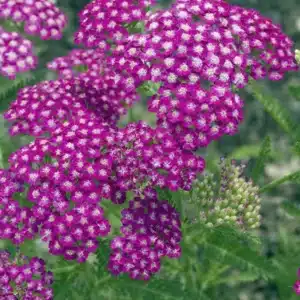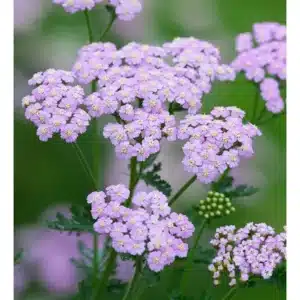Yarrow, Common Yarrow, White Yarrow, Western Yarrow, Gordaldo, Nosebleed Plant, Old Man's Pepper, Devil's Nettle, Dog Daisy, Dog Fennel, Milfoil, Soldier's Woundwort, Thousand Leaf, Sanguinary, Milenrama, Bloodwort, Carpenter's Weed, Plumajillo








‘Yarrow’ requires well-drained soil and 6-8 hours of full sunlight daily. The plant will freely self-seed and has the potential to become aggressive. ‘Yarrow’ is easily-propagated by lifting and dividing clumps to transplant elsewhere. The plant may also be grown from seed, which may be purchased from a reputable, local nursery, or collected from the plant in fall. Seed may be directly-planted into loose soil in the warmer months. Seed should be covered very lightly to allow light to penetrate but also to keep it from being displaced. Young plants should be thinned to a spacing of 1 or 2 feet to allow air to circulate.
‘Yarrow’ thrives in full sun, and excellent soil drainage is essential to the plant. ‘Yarrow’ should receive 6-8 hours of direct sunlight daily, and will only require watering when the surrounding soil has been allowed to thoroughly dry. If the planting site is overly-shady, ‘Yarrow’ will stretch to receive more light, therefore requiring staking.
‘Yarrow’ does not require fertilizer. Fertile soil will enable the plant to spread aggressively.
‘Yarrow’ can be dead-headed regularly to keep its spreading habit in check. The plant may be cut back to about 6 inches after blooming to allow fresh new growth and encourage renewed flowering. ‘Yarrow’ should be cut back to its base in the fall.
‘Yarrow’ is not affected by any serious pests. In fact, this plant attracts a host of beneficial pollinators to the garden. ‘Yarrow’ will not tolerate poor soil drainage and can suffer from fungal diseases in excessively-moist conditions. These are preventable by allowing the plant to grow in the dry, sunny conditions it prefers.















